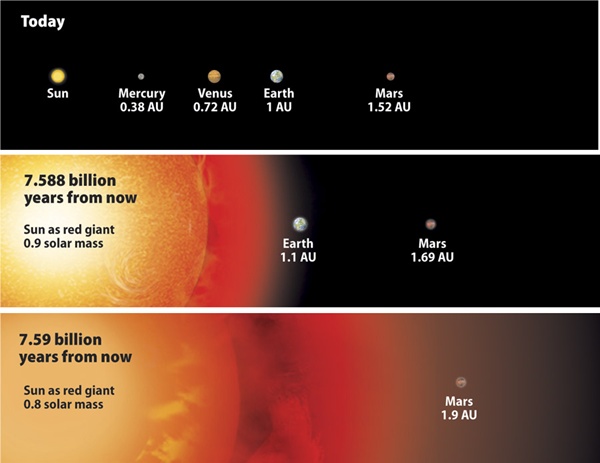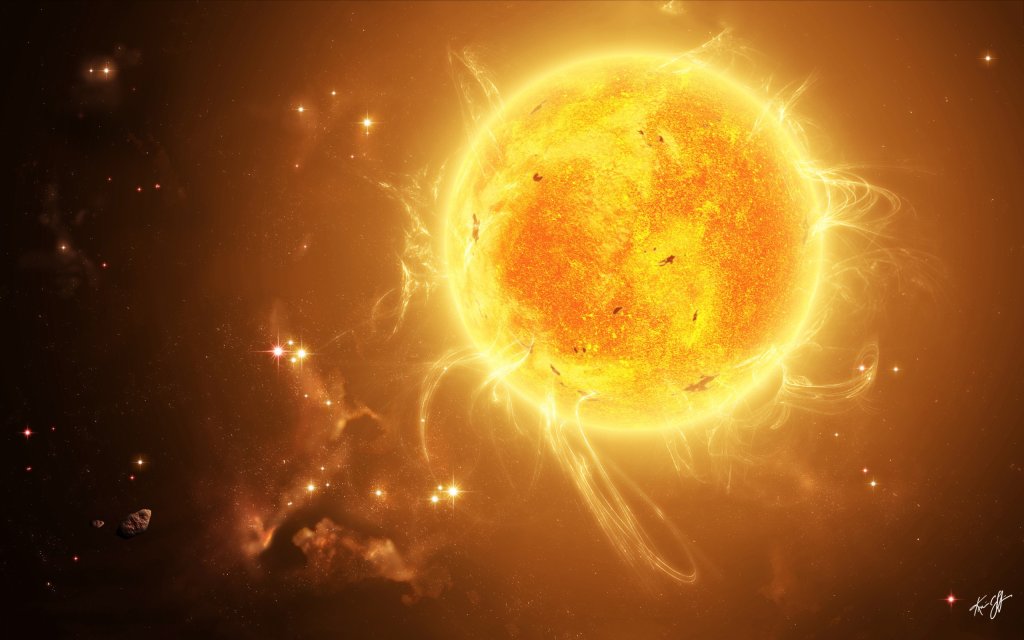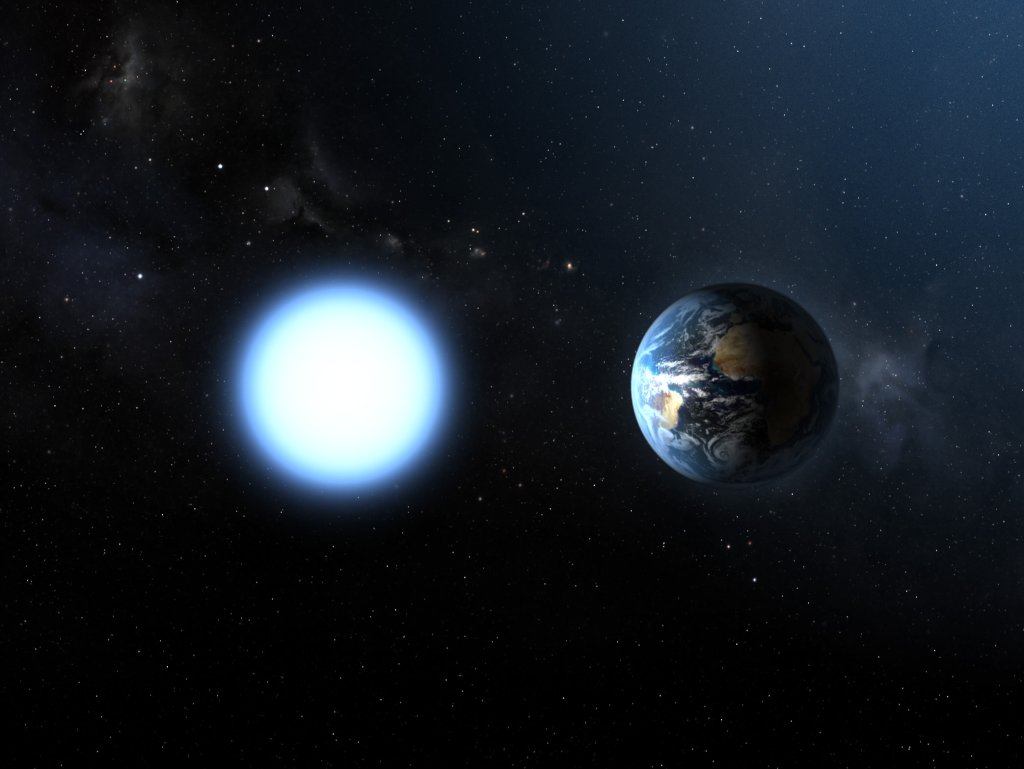

Just as the life on Earth is dependent upon the energy from the sun for sustenance, so does the fate of our solar system hinge on the sun’s survival. Our sun, which is classified as a yellow dwarf (a misnomer since the sun is neither small nor yellow), is a middle age star that’s approximately 5 billion years old. As a main-sequence star with a finite lifespan, it will eventually die. This end will occur following the depletion of the last of the hydrogen forged in its core.
But what exactly will happen when it uses the last of its hydrogen?
Well, when this occurs, the core of the sun will shrink under its own gravity and become so dense that the helium atoms will begin to collide to form carbon and oxygen atoms. The collisions of said elements will churn out more energy than what the sun currently does (a lot more). This is because the current amount of energy is dependent on the sun’s fusion of hydrogen into helium, and hydrogen and helium are the lightest elements.
The extra energy will prove to be the beginning of the end for home (no, I don’t mean your house; I mean the Earth…well, and also your house). For one, the core will increase in temperature, causing the sun to swell to hundreds of times its present size, changing its status from a yellow dwarf to a red giant, which will certainly be the end of the two innermost planets of our solar system, Mercury and Venus (both will be incinerated in the initial expansion).
The fate of our home planet is still largely a guessing game. Many scientists speculate that our “blue marble” will become a black husk, and that it will be consumed by our sun. Some others claim that the Earth will be pushed out of orbit, away from the sun; however, regardless of whether Earth survives total incineration during the initial increase in the sun’s surface area, it will no longer be habitable to humans (or most other Earthlings, for that matter). The oceans will boil and evaporate, the atmosphere will be blown away – lost to space forever – while all of the lush vegetation – along with any surviving ecosystems – will be destroyed. All that will be left is a barren wasteland not fit for humans…or any H2O dependent Earth-based life.

The outer planets, those that are located beyond the orbit of Mars, might have another fate altogether, especially some of the moons of Jupiter and Saturn. Particularly, Europa and Enceladus. Both are known to host frozen bodies of liquid water under their icy surfaces. Europa is believed to contain more water on it than there is water in all of the oceans, lakes, and streams on Earth. Thanks to the huge expansion of the sun, places in the outermost regions of our solar system will have a few million years to thaw out a bit. Think of it as a short springtime after a 10 billion year winter–one last golden era before the sun sets for the final time and perpetual darkness takes over.
But, this could play out another way entirely. As stars lose mass, it’s typical for orbits within a planetary system to change. Any bodies orbiting closer in (the inner planets of the solar system) will experience drag due to the increased density of released gas from the dying sun.
Those farther out will sometimes be spared, but will have orbits that slowly expand as the mass interior to their orbit is shed. Planets at different radii will feel the combination of these effects in different ways — causing their orbits to change in ways unrelated to one another. So some stars will migrate and interact with other planets in the system in a way similar to past behaviors (generally, when the solar system was much younger). Any close interactions could potentially cause the planets and moons to collide, either sending them into looping elliptical orbits, or flinging them out of the system entirely (like a rogue planet).

Meanwhile, on the sun, the helium-burning reaction will produce strong solar winds like sun has never done before. As the material drifts from the sun’s surface and into the surrounding region, it will carry off some of its remaining hydrogen in its outermost layers, forming a brilliant planetary nebula. The resulting nebula will be visible for thousands of years to any civilizations existing within a few hundred light-years of our former stellar neighborhood.
Eventually, that too will end when there isn’t enough pressure at the core to keep the process of helium fusion going. What’s left of our precious sun will inevitably contract under its own gravity and become a much more compact, dense star that radiates leftover heat (from the earlier nuclear fusion). At this point, our once life-giving sun will be a white dwarf…and the king of a dead solar system. A white dwarf will eventually cool over a few hundred million years, with the remaining mass being jammed into a sphere approximately the same size as Earth, but much more dense. Eventually, this energy too will dissipate, leaving behind a stellar corpse called a black dwarf; effectively ending the journey of life in our star system (unless something comes along to jump-start it, of course).
From Quarks to Quasars is two people, Jaime and Jolene.
We want to make the world a more sciencey place.
We’re doing that, but with your help, we can do even more.
FQTQ takes a lot of time, money, and effort.
Here, you can support us, get to know us, and access extra content: